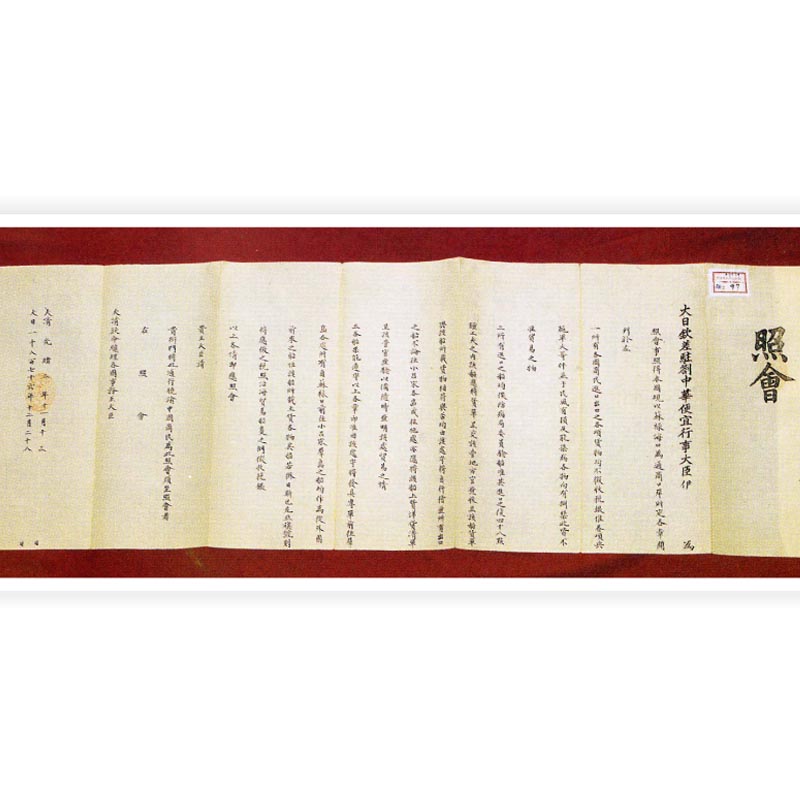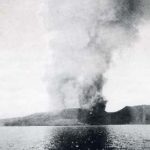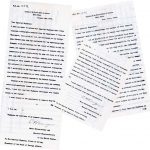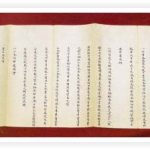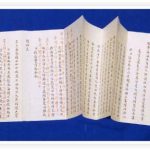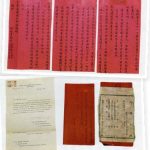A cholera outbreak. A deadly volcanic eruption. Gifts of jade and pearls. Purchase of carabaos.
There is much one can learn about events in the Philippines from studying China’s historical archives. That should not surprise anyone. After all, the two countries are neighbors. What happens to one can impact the other.
Take travel advisories, for instance.
“A Spanish envoy gives notice of cholera outbreak in Luzon,” says document 93 dated Sept. 20, 1882 mentioned in the book Collection of Archives on the Relations between China and Southeast Asian Countries in the Qing Dynasty, vol. II: Philippines. In the 19th century, these were issued as military advisories.
As well, there are five documents regarding Philippine donation of English books to China!
Famine in the Philippines
Another interesting vignette is about famine in the Philippines and an icon of our country, the carabao (water buffalo).
“The mother of the Philippine carabao is Chinese,” says headline of a report from the Philippine Carabao Center in Muñoz, Nueva Ecija in 2010.
Leslie Anne Del Barrio and co-researchers of the PCC conducted DNA sequencing studies to compare our local carabao with those from other countries. The finding: the Philippine carabao descended from the maternal line of Chinese buffaloes.
The PCC’s DNA test confirmed what had already been recorded in Chinese documents found in the Qing Dynasty (1644-1911) archives.
Six documents – numbers 245-250 – showed that famine had decimated the carabao population in the Philippines in 1901 to 1902. To avert the “great distress” brought about by the loss of 90 percent of carabaos in the country, the American colonial government decided to buy carabaos from China. Documents archives show the Americans transacting with China for the importation of 30,000 heads of carabao. The loss of the carabaos may partly be due to the famine itself, which pushed hungry farmers to slaughter their beasts for food. But the Philippine-American War itself could have caused the deaths due to destruction of homes, injuries, lack of feed and disruption to farming.
Beijing’s response to the American request was that only 300 could be exported so as not to affect China’s own farmers. The request for tax exemption was likewise not granted. But instead, China agreed to donate the full amount of the taxes for the Filipino farms’ rehabilitation. If 90 percent of the carabaos died during that period, we can only wonder about the number of people who perished. This carabao story and many other significant vignettes in Philippine history can be found in documents in the second volume of the Qing archives.
The Philippine volume has 523 pages divided into seven sections. Section IV is the longest section with 186 entries.
The documents were gathered through efforts of Kaisa Para Sa Kaunlaran and Beijing’s First National Archives in 2003, with funding provided by taipan Lucio Tan upon Kaisa’s request.
Sulu documents
In the Qing archives, the most frequently mentioned place in the Philippines is Sulu. Out of the 420 documents on the Philippines collected in the book, 73 pertain to Sulu. As part of the commemorative activities for the 600th anniversary of the visit of the Sultan of Sulu to China in 1417, we share some of the more valuable documents on Sulu here.
In Emperor Yongzheng’s seventh year (1729): “Strong winds swept a boat originating from Luzon to the shores of Fosan in Guangdong. The governor of Guangdong gave them food and shelter as they await the weather to improve. Subsequently, the same treatment is given to any foreign boats swept to local shores. They are given food and help in repairing their boats until they can go back home,” reports the Great Qing Dynasty Compendium of Events.
In Emperor Qianlong’s fifth year (1740): “The Fujian prefect praised the Sulu king and gave him a reward for taking care of 25 traders from Hai Teng municipality swept away by strong winds. Likewise recorded in the Qing Dynasty Annals: “The Sulu king had given his protection and help to Chinese traders who had met a typhoon in the Philippines also in Emperor Qianlong’s fifth year. The Sulu king sent his own boatmen to escort the traders back home to China mainland.
“The Qing Dynasty emperor had issued specific instructions that Filipinos or other fishermen in neighboring countries swept by turbulent waters to Chinese shores must be well taken care of and protected. “The Sulu people belong to the Malay race. They were good fighters: brave and cruel. When Spain conquered Luzon, she tried her best to make Sulu one of her protectorates but Sulu refused. Though the Spaniards dispatched troops to conquer her, they were defeated.”
In addition to the Sulu documents, below is an outline of sections and brief descriptions of sample documents, translated into English.
Section I: Military Records
Part 1: Secondary records, 90 documents
• Doc. 2, Nov. 2, 1742: a report from a Fujian admiral regarding the return date of the Sulu envoy, and Document 38, page 29, Aug. 8, 1761 is a “Gift list from Sulu.”
• Doc. 88, p. 92: Decree from the Foreign minister assigning Consul General Yang Shijun to America’s small Luzon (Philippines), during the reign of Emperor Guangxu (1875-1908).
Part 2: Advisories regarding life in the Philippine islands, four documents
• Doc. 93, Sept. 20, 1882: a Spanish envoy gives notice of cholera outbreak in Luzon.
Part 3: Edict files, 12 documents
• Doc. 97, March 18, 1764: lists “Gifts of five jadeware to the Sulu king as special reward.”
• Doc. 106: Military ordering merchants not to engage in gambling in Luzon.
Part 4: Telegraph files, five documents
• Doc. 107: a telegraph dated July 18, 1885 from Guangdong’s governor stating that in Xiamen, some people from Luzon opened up a gambling den and resisted arrest.
Section II: Interior Files. (The Ministry of the Interior is equivalent to the Philippine’s presidential cabinet.)
Diplomatic or consular files, four documents
• Doc. 114: A list of gifts to the Sulu king from Emperor Qianlong, 1754.
Section III: Palace Files
Part 1: Zhu Pi Memorials/memoirs (Zhu Pi might be a person), 94 documents
• Doc. 140: A Fuzhou general reports on the arrival of boats from Sulu and a tax exemption, Dec. 21, 1747.
Part 2: Palace telegraph files, seven documents
• Doc. 214: General Yuan wired to inform of three Russian boats fleeing to Luzon, June 5, 1905.
Section IV: National and Foreign Affairs Archives
• Doc. 217: Document from the Spanish envoy in the Philippines about disease prevention (in Spanish), Sept. 20, 1882
• Doc. 220: a map of the Philippines, April 2, 1899.
• Doc. 221: a Map of Manila, April 2, 1899.
• Doc. 245: a Letter of a United States official to China’s Imperial Highness requesting tax exemption for 10,000 cattle purchase, Oct. 24, 1903 (in English).
• Doc. 248: a follow-up letter that Export Duty will be paid as usual but the amount to be donated to the Philippines for relief, Nov. 13, 1903 (in English). Note: “…that owing to the friendly relations existing between China and the United States something must be done by way of compensation for favors received.”
• Doc. 250: the actual telegraph about the purchase of the water buffalo, Nov. 20, 1903.
• Doc. 251: a request for purchase of 100,000 piculs of rice from Yangtse Valley to the Philippines for famine relief, March 24, 1904 (in English). (A picul is a traditional Asian unit of measurement, referring to as much weight as one can carry on a shoulder pole. One picul is estimated to be about 60 kilograms.)
• Doc. 253: a request letter to buy 100,000 piculs of rice, March 5, 1904 (in French).
• Doc. 279: furnishes China’s Imperial Highness of “Census of the Philippine Islands for 1903,” April 16, 1906 (in English).
• Doc. 277: a donation to Anglo Chinese School by Gong Xian Xi (龔顯禧), March 13, 1906.
• Doc. 366: outlines the arrest of more than 30 people for violating the firecracker ban, Jan. 24, 1911.
• Doc. 367: a bulletin containing a schedule when firecrackers are allowed, Jan. 24, 1911. Note: street names are in English.
• Doc. 368, 369, 370: a long report of the Taal Volcano eruption where 500 died from volcanic sulphur while more than 2,000 died when boiling lake water rose more than 10 feet. The documents also included two blurry photographs of the eruption.
Section V: Interior Government . In two sections, nine documents.
• Part 1 compiles letters from various sources and different subjects sent to the Chinese emperor and/or officials from 1743 to 1803. Some of the documents are regarding arrangements for official visits.
• Part 2 has documents dated from 1727 to 1763 detailing various gifts from the Sultan of Sulu to Emperor of China.
For example, on June 24, 1727, the Sultan gave two kinds of pearls (it could be two pearls or two pieces of jewelry with pearls), 12 pieces tortoise shells, several bolts of different kinds of cloth (many of them native cloth described as bamboo cloth), swallows nest, a pair of kris, a pair of knives, mats and a firing instrument, possibly a rifle.
nSection VI: On Education
Five documents contain lists of English books donated by the Bureau of Education to China’s Ministry of Education on Oct. 11, 1910.
nSection VII: Agriculture, Industry and Business Matters
This section contains four documents – including an insurance company’s solicitation letter and a speech about China’s commerce – delivered at the Anglo Chinese School in 1906.
